#Biodiversity Park
Explore tagged Tumblr posts
Text
#Sabarmati River Cruise Restaurant#Akshar River Cruise#Dadhichi Bridge#Atal Bridge#food court#Biodiversity Park#Riverside Promenade#Riverfront
0 notes
Text
"Helio da Silva, a retired business executive from Brazil, single-handedly planted over 41,000 trees in his hometown of Sao Paulo over the last two decades.
Flying over the Brazilian metropolis of Sao Paulo, it’s tough to miss the 3.2-kilometers-long and 100-meter-wide green strip of trees wedged between two of the city’s busiest roads. It is known as Tiquatira Linear Park, and it is the work of a single man who worked tirelessly for over 20 years in order to transform a previously dilapidated area into an actual jungle within the urban jungle that is Sao Paulo. Originally from the town of Promissao, about 500km from Sao Paulo, Helio da Silva was a successful business executive for many years, but after retiring, he took it upon himself to transform the degraded banks of the Tiquatira River into a green oasis for his community. He started planting trees there in 2003 and hasn’t stopped since.
73-year-old da Silva recently told AFP that he wanted to leave a legacy to the city that adopted him decades ago. Within the first four years of his epic project, he single-handedly planted 5,000 trees in an area that had long been abandoned and known to be frequented by drug dealers and users. His impressive feat prompted the municipality of Sao Paulo to recognize his efforts and acknowledge the area as the first linear park in Sao Paulo. This only emboldened da Silva, who continued planting native trees.
By 2020, Helio had planted more than 25,047 trees over a 3.2-km-long area, achieving a survival rate of 88 percent. For every 12 trees, he planted a fruit-bearing species in the hopes of attracting birds and animals to his green oasis. His bet paid off, as according to the municipality, 45 types of birds have been identified in the park. Today, the Tiquatira Linear Park numbers over 41,000 individual trees, and Helio da Silva doesn’t plan on stopping planting until he reaches at least 50,000 of them.
“My motivation comes from the trees themselves because trees give us flowers and fruits, absorb rainwater, attract birds and provide us with wonderful shade and fresh air,” da Silva told Common Earth.
The retired executive estimates that he spent about $7,000 per year on his tree-planting efforts since 2022, but the way he sees it, it was a worthwhile investment for himself, his family and the whole of Sao Paulo. Plus, he saved a lot of money by planting the trees himself.
Once labeled as crazy for spending most of his time planting trees in an area most people avoided, Helio da Silva is now hailed as a local hero. He sometimes receives help from like-minded nature lovers, but he is still the driving force behind this amazing project. Every Sunday, he comes to Tiquatira Park to plant more trees.
Over the years, the city gym and playground equipment, tables, benches, toilets, and Tiquatira Linear Park eventually became one of Sao Paulo’s most popular areas."
youtube
-Article via OddityCentral, October 4, 2024. Video via France24, September 26, 2024.
--
Note: ONE SINGLE PERSON CAN MAKE A SUCH A DIFFERENCE
#brazil#sao paulo#south america#park#urban park#trees#nature#biodiversity#climate action#climate adaptation#hopepunk#solarpunk#native plants#environment#plants#ecology#good news#hope#Youtube#edited to fix the spelling of Sao Paulo#can only do that in the article text tho#not the title#sorry about that
1K notes
·
View notes
Text


Black harvester ants (Veromessor pergandei) not so kindly escorting a darkling beetle (probably genus Argoporis) away from their nest. Since this kind of beetle tends to be a detrivore or scavenger, perhaps it was trying to steal food from the ants. As far as I could tell, no one was injured in this incident. The beetle seemed to have learned its lesson and did not try to return to the nest.
Mojave Desert, California, US
#Argoporis#veromessor pergandei#ants#beetle#coleoptera#hymenoptera#harvest ants#darkling beetle#Tenebrionidae#such drama#nature#bugs#nature photography#bugblr#biodiversity#animals#inaturalist#arthropods#entomology#insect appreciation#mojave desert#mojave#red rock canyon state park#the one in california not nevada#desert#desert creatures#zoology#invertebrates#inverts#macro photography
103 notes
·
View notes
Text
I have like 5lb of black eyed Susan seeds in my fridge for next year . I’m going to plant some many fucking flowers
#possibly hundreds of thousands#depending on where I plant them and if they thrive etc#I am helping bring some biodiversity back to another nearby park#it’s full of invasives and turf grass
106 notes
·
View notes
Video
tumblr
control mosquitos
#tiktok#gardening#DIY gardening#garden#home grown national park#solarpunk#solar punk#biodiversity#DIY garden#DIY
369 notes
·
View notes
Text
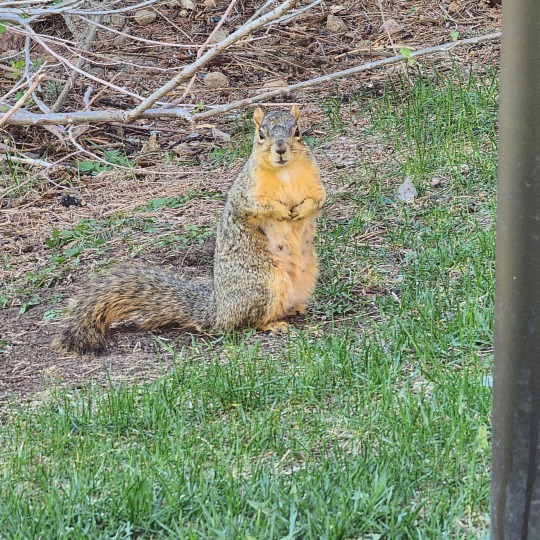
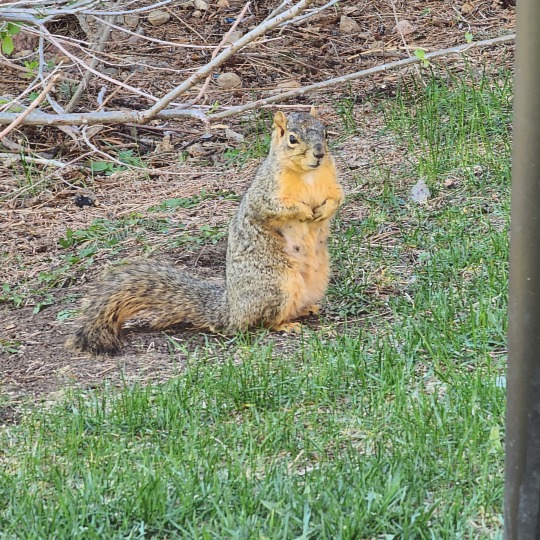
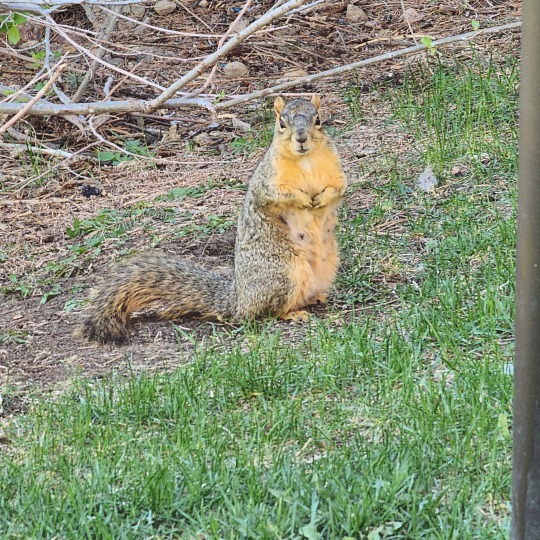
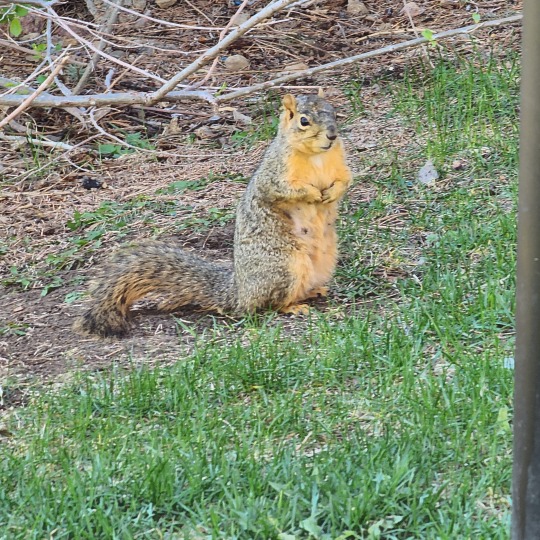
#Squirrel#UrbanParks#ColoradoWildlife#WildlifePhotography#NaturePhotography#Biodiversity#UrbanWildlife#HabitatPreservation#NatureLovers#Photography#Nature#Wildlife#OriginalPhotography#LandscapePhotography#TravelPhotography#PhotographersOnTumblr#colorado#natureisbeautiful#wild animals#parks
44 notes
·
View notes
Text
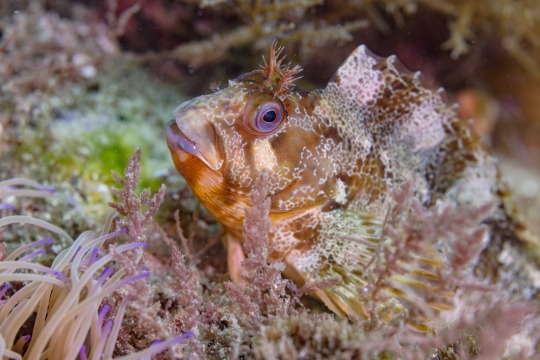
Tompot blenny
“Tompot blenny (Parablennius gattorugine), Arrábida National Park, Portugal. Note: no FP of this species. It can be found in shallow, coastal waters off western Europe, the Mediterranean and North Africa. The tompot blenny is a relatively large blenny that can grow up to 30 centimetres (12 in) in length. There is a single branched tentacle over each of its eyes. It's very territorial and their territories are centred around a crevice in the rocky reef which the fish uses for shelter. They occur in shallow seas at depths of 3–32 metres (9.8–105.0 ft). It has sharp, comb-like teeth which they use to scrape food from the substrate. They feed on sea anemones and on other invertebrates such as prawns and other crustaceans. They are crepuscular, being active mainly at dawn and at dusk.” - via Wikimedia Commons
#picture of the day#picture of the day 01/22/2025#tompot blenny#Parablennius gattorugine#wikipedia#wikipedia pictures#wikimedia commons#nature#animals#fish#Combtooth blenny#marine life#marine biology#marine biodiversity#icthyology#Arrábida National Park#portugal#eukaryota#eukaryotes#fauna#chordata#chordates#Actinopterygii#bony fish#Blenniiformes#blenny#ocean animals#ocean aesthetic#oceancore#fishblr
11 notes
·
View notes
Text

#IFTTT#Flickr#portrait#park#philodromusmargaritatus#philodromus#animal#animals#akdiffuser#araneae#arachnid#arachnology#arachnophobia#adventure#wild#wildlife#wildlifephotography#autumn#em1iii#eyes#explore#beautiful#teleconverter#red#yellow#rural#orange#tree#trees#biodiversity
13 notes
·
View notes
Text
Arch of Tasmania, Tasmania, Australia
© Gary Bell
Minden Pictures

Welcome to Tasmanian National Park, a gem on the island of Tasmania, Australia. This park, which extends over 106 square kilometers, is home to a rich biodiversity: native flowers, Australian seals and small penguins that find refuge in this unique environment.
#Gary Bell#Minden Pictures#Arch of Tasmania#Tasmania Australia#Tasmanian National Park#gem on the island of Tasmania Australia#This park which extends over 106 square kilometers#rich biodiversity#native flowers#Australian seals and small penguins#artists photographie#art#original art#original photographer#photographer#art style#work in art#art word#natural color#photo color#diversity#de tot#fotos art#xpuigc#xpuigc bloc
10 notes
·
View notes
Text
#acadia national park#apex predator#biodiversity#birds#candice gaukel andrews#climate change#conservation#covid 19#ecotravel#environment#glacier national park#global warming#human-wildlife conflict#mammals#national parks#natural habitat adventures#nathab#natural habitats#nature#red fox#science#science and environment#scientific research#trails#us national parks#wild#wildlife#wildlife corridors#world wildlife fund#wwf
118 notes
·
View notes
Text
California’s Yurok Tribe, which had 90% of its territory taken from it during the gold rush of the mid-1800s, will be getting a slice of its land back to serve as a new gateway to Redwood national and state parks visited by 1 million people a year.
The Yurok will be the first Native people to manage tribal land with the National Park Service under a historic memorandum of understanding signed on Tuesday by the tribe, Redwood national and state parks and the non-profit Save the Redwoods League.
The agreement “starts the process of changing the narrative about how, by whom and for whom we steward natural lands”, Sam Hodder, president and CEO of Save the Redwoods League, said in a statement.
The return of the 125 acres (50 hectares) of land – named ’O Rew in the Yurok language – more than a century after it was stolen from California’s largest tribe is proof of the “sheer will and perseverance of the Yurok people”, said Rosie Clayburn, the tribe’s cultural resources director. “We kind of don’t give up.”
For the tribe, redwoods are considered living beings and traditionally only fallen trees have been used to build their homes and canoes.
“As the original stewards of this land, we look forward to working together with the Redwood national and state parks to manage it,” Clayburn said. “This is work that we’ve always done, and continued to fight for, but I feel like the rest of world is catching up right now and starting to see that Native people know how to manage this land the best.”
The property is at the heart of the tribe’s ancestral land and was taken in the 1800s to exploit its old-growth redwoods and other natural resources, the tribe said. Save the Redwoods League bought the property in 2013 and began working with the tribe and others to restore it.
Much of the property was paved over by a lumber operation that worked there for 50 years and also buried Prairie Creek, where salmon would swim upstream from the Pacific to spawn.
Plans for ’O Rew include a traditional Yurok village of redwood plank houses and a sweat house. There also will be a new visitor and cultural center displaying scores of sacred artefacts from deerskins to baskets that have been returned to the tribe from university and museum collections, Clayburn said.
It will add more than a mile (1.6km) of new trails, including a new segment of the California Coastal Trail, with interpretive exhibits. The trails will connect to many of the existing trails inside the parks, including to popular old-growth redwood groves.
The tribe had already been restoring salmon habitat for three years on the property, building a meandering stream channel, two connected ponds and about 20 acres (8 hectares) of floodplain while dismantling a defunct mill site. Crews also planted more than 50,000 native plants, including grass-like slough sedge, black cottonwood and coast redwood trees.
Salmon were once abundant in rivers and streams running through these redwood forests, But dams, logging, development and drought – due in part to the climate crisis – have destroyed the waterways and threatened many of these species. Last year, recreational and commercial king salmon fishing seasons were closed along much of the west coast due to near-record low numbers of the iconic fish returning to their spawning grounds.
The tribe will take ownership in 2026 of the land near the tiny northern California community of Orick in Humboldt county after restoration of a local tributary, Prairie Creek, is complete under the deal.
A growing Land Back movement has been returning Indigenous homelands to the descendants of those who lived there for millennia before European settlers arrived. That has seen Native American tribes taking a greater role in restoring rivers and lands to how they were before they were expropriated.
Last week, a 2.2-acre (0.9-hectare) parking lot was returned to the Ohlone people where they established the first human settlement beside San Francisco Bay 5,700 years ago. In 2022, more than 500 acres (200 hectares) of redwood forest on the Lost Coast were returned the InterTribal Sinkyone Wilderness Council, a group of 10 tribes.
The ’O Rew property represents just a tiny fraction of the more than 500,000 acres of the ancestral land of the Yurok, whose reservation straddles the lower 44 miles (70km) of the Klamath River. The Yurok tribe is also helping lead efforts in the largest dam removal project in US history along the California-Oregon border to restore the Klamath and boost the salmon population.
The Redwoods national park superintendent, Steve Mietz, praised the restoration of the area and its return to the tribe, saying it is “healing the land while healing the relationships among all the people who inhabit this magnificent forest”.
#excerpts#yurok tribe#national parks#California#environment#indigenous rights#tribal rights#land back#national park service#ecosystems#biodiversity#salmon
28 notes
·
View notes
Text
Underwater life at Sa Dragonera Island Marine Reserve in Mallorca (Balearic Islands). Video by Save The Med Foundation.
The sea area around the Sa Dragonera islet is home to a wide diversity of habitats and species in a relatively small space. Like most of the Mediterranean, until recently the biodiversity of this area was endangered. The first critical moment was in the 1970s, with the growth of tourism pressure in the Balearic Islands, when the islets in this area were bought by a company that was going to urbanised them. The local people got organised and did a peaceful occupation of the islets, until they managed to stop the building project, get the island's local government to buy the area and ensure it became a public natural park, and protected as such.
The land was safe, but the biodiversity in the water continued to be endangered. Locals have continued pressuring the government to protect more waters, and each expansion has proven amazing results. Some fish species have shown an increase of 10%, 16%, and even 40% more individuals than before the area was protected.
The last expansion of marine area to be included in the protected area was the "exterior waters" in 2020. In these 3 years, the dusky grouper fish population has grown to be 7 times what it was 3 years ago, brown meagres are 22 times more, and forkbeards are 16 times more (source). The fish species valued as food have triplicated.
All of this has been possible thanks to experts in the field and also local people who are organised in the association Xarxa Dragonera Blava, where everyone takes care of the area from their own sector. All the management and decisions taking processes in relation to this area are done through a participative model with Xarxa Dragonera Blava and all the local community.
These wonderful results give hope around the world, because the marine reserve model works. Particularly in the Mediterranean Sea, with a huge problem of overfishing, it's a model that needs to be applied more widely.
#natura#sa dragonera#reserva marina illa sa dragonera#parc natural de sa dragonera#mallorca#illes balears#biodiversity#animals#sea life#wildlife#wildlife conservation#natural park#travel#mediterranean#sea#europe
32 notes
·
View notes
Text
"For over a decade, the Yosemite toad has been recognized as a federally threatened species, after experiencing a 50% population decline during the Rim Fire of 2013.
The wildfire, which encompassed a mass of land near Yosemite National Park, made the amphibian species especially vulnerable in its home habitat.
Native to the Sierra Nevada, the toads play a key role in the area’s ecosystem — and conservationists stepped in to secure their future.
In 2017, the San Francisco Zoo’s conservation team began working with the National Park Service, Yosemite Conservancy, U.S. Fish & Wildlife Service, California Department of Fish & Wildlife, and the U.S. Geological Survey.
The goal of all of these stakeholders? To raise their own Yosemite toads, re-establishing a self-sustaining population in the wild.

“Over the past several years, SF Zoo’s conservation team has been busily raising hundreds of these small but significant amphibians from tadpole stage, a species found only in the Sierra Nevada, for the purpose of reintroducing them to an area of Yosemite National Park where it was last seen 11 years ago,” the zoo shared on social media.
By 2022, a group of toads were deemed ready for release — and at the end of June of this year [2024], 118 toads were flown via helicopter back to their habitat.
“It’s the first time anyone has ever raised this species in captivity and released them to the wild,” Rochelle Stiles, field conservation manager at the San Francisco Zoo, told SFGATE. “It’s just incredible. It makes what we do at the zoo every day worthwhile.”
Over the past two years, these toads were fed a diet of crickets and vitamin supplements and were examined individually to ensure they were ready for wildlife release.
Zoo team members inserted a microchip into each toad to identify and monitor its health. In addition, 30 of the toads were equipped with radio transmitters, allowing their movements to be tracked using a radio receiver and antenna.
The project doesn’t end with this single wildlife release; it’s slated to take place over the next five years, as conservationists continue to collect data about the toads’ breeding conditions and survivability in an ever-changing climate. They will also continue to raise future toad groups at the zoo’s wellness and conservation center...
While the future of the Yosemite toad is still up in the air — and the uncertainty of climate change makes this a particularly audacious leap of faith — the reintroduction of these amphibians could have positive ripple effects for all of Yosemite.
Their re-entry could restore the population balance of invertebrates and small vertebrates that the toads consume, as well as balance the food web, serving as prey for snakes, birds, and other local predators.
“Zoo-reared toads can restore historic populations,” Nancy Chan, director of communications at the San Francisco Zoo, told SFGATE.
Stiles continued: “This is our backyard, our home, and we want to bring native species back to where they belong.”
-via GoodGoodGood, July 11, 2024
#yosemite#yosemite national park#california#united states#amphibian#frogs and toads#frogblr#frogposting#toadblr#toad#endangered species#wild animals#biodiversity#wildlife conservation#wildlife#good news#hope
1K notes
·
View notes
Text



Fork-tailed bush katydid (Scudderia furcata) Northern California, US
#pretty colors#katydid#Scudderia furcata#scudderia#orthoptera#bugs#nature#nature photography#biodiversity#bugblr#animals#arthropods#entomology#insect appreciation#inaturalist#creature#california wildlife#wildlife photography#green#red#joseph d grant county park#hiking#outdoors#invertebrates
16 notes
·
View notes
Text

Utsikt från Fulufjället, akvarell, 17x12 cm
Det är ett sånt motiv som jag aldrig kommer att kunna göra rättvisa. När jag stod där blev jag alldeles fylld av vördnad inför utsikten. När jag försöker att måla den så känns det inte alls på samma sätt. Jag finner tröst i det faktum att världen består av så mycket mer skönhet än vad någon kan beskriva.
View from Fulufjället, watercolour, 17x12 cm This is one of those subjects that I could never make justice. When I stood there, the view filled me with awe. When I try to paint it, it just don't resonate with me the same way. I find comfort in the fact that the world holds a lot more beauty than what anyone could ever describe.
#fulufjället#nationalpark#skog#natur#skydda skogen#biologisk mångfald#akvarell#konst#forest#nature#national park#protect the forest#biodiversity#art#watercolour#watercolor#watercolor painting#watercolor art#aquarelle#acuarela#aquarela#acquerello#ακουαρέλα#suluboya#akwarela#акварель#水彩#peace#petter brorson edh
55 notes
·
View notes
Video
tumblr
https://homegrownnationalpark.org/
start showing up to your local city and county planning and zoning meetings and demand this. HOA meetings too.
#tiktok#biodiversity#home grown national park#urban design#urban planning#Ecosystem#gardening#community garden#garden#DIY gardening#nature
111 notes
·
View notes